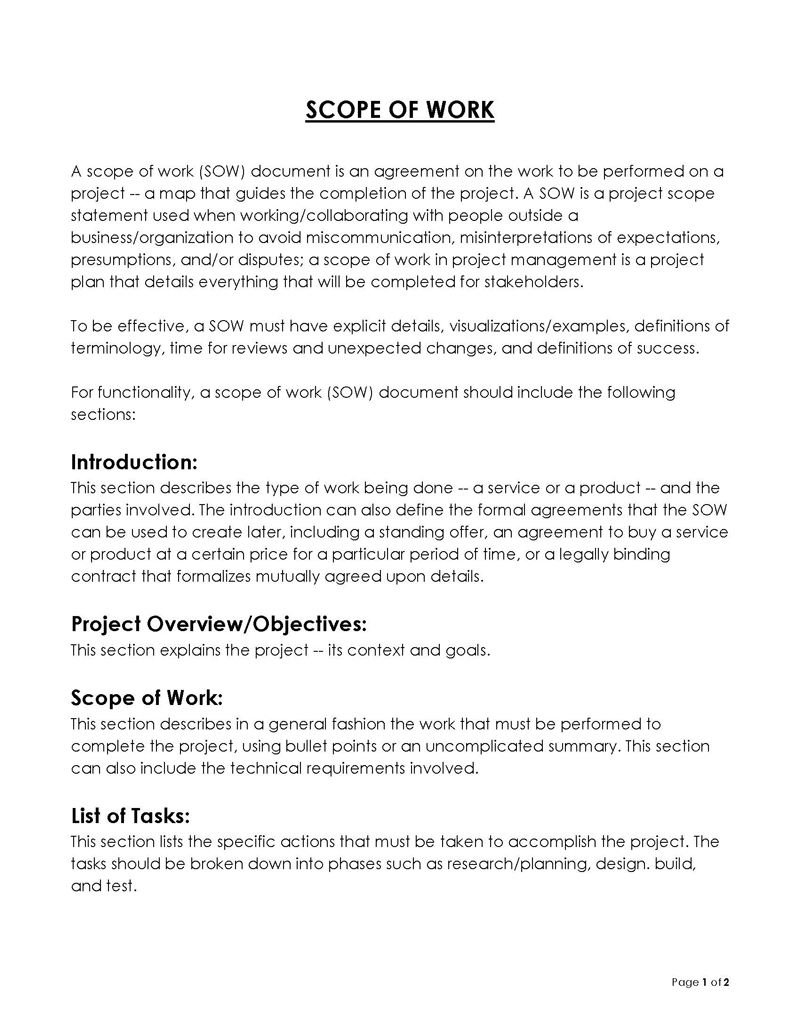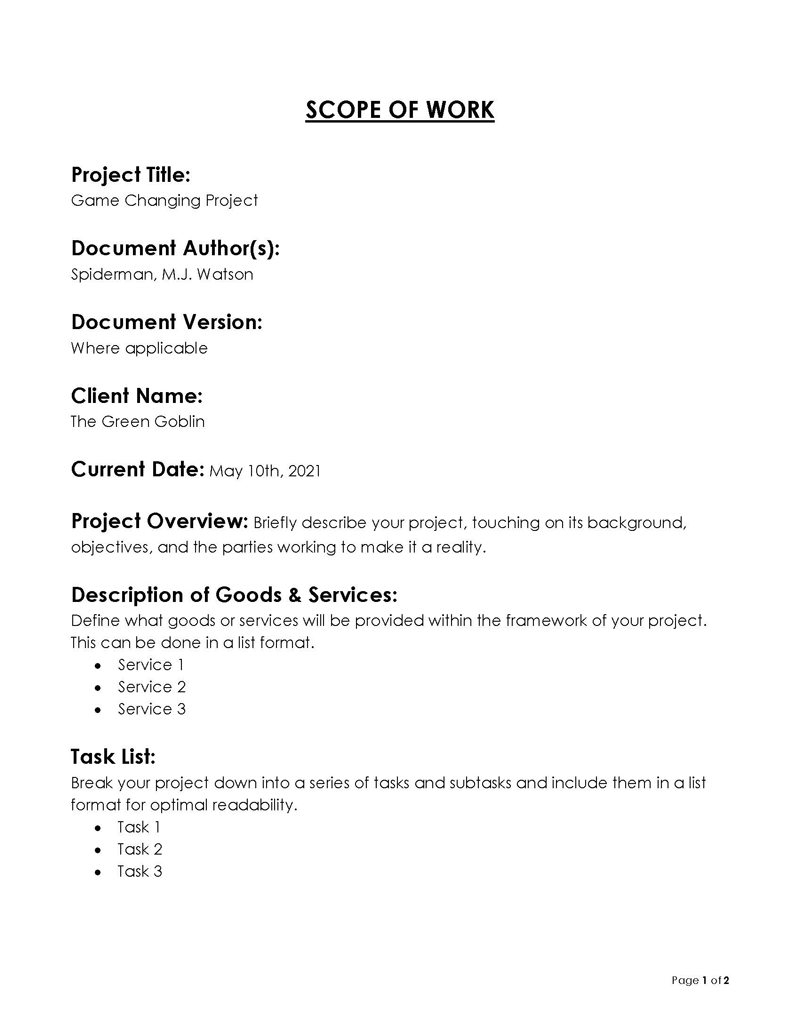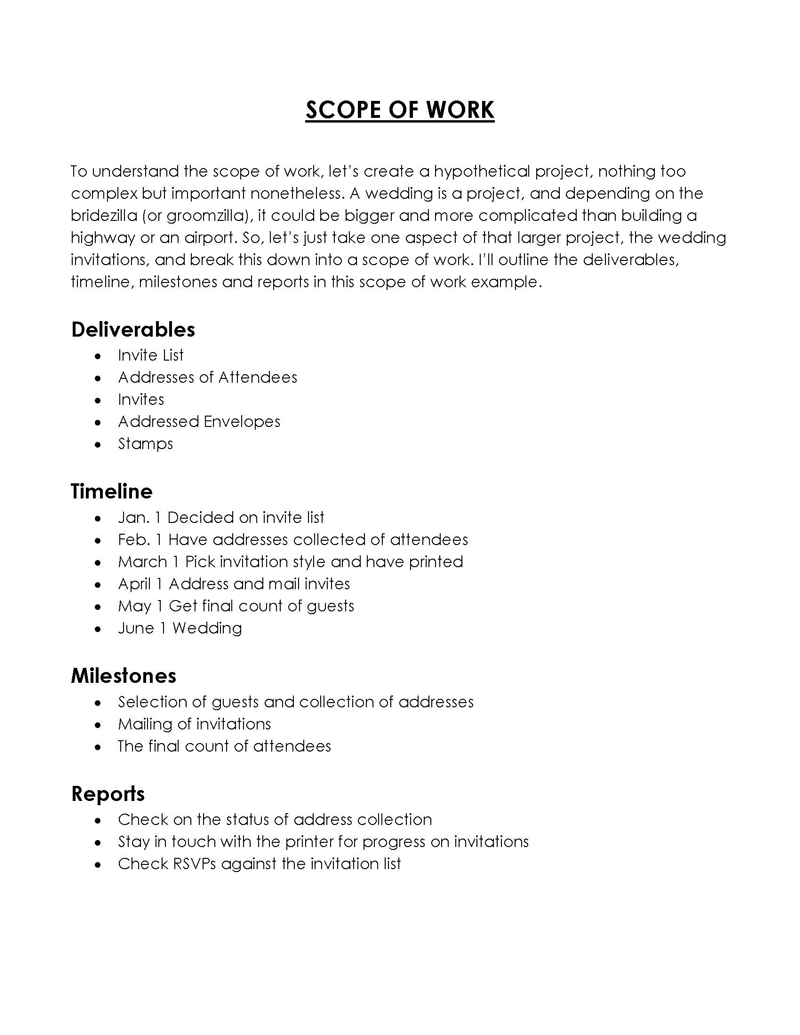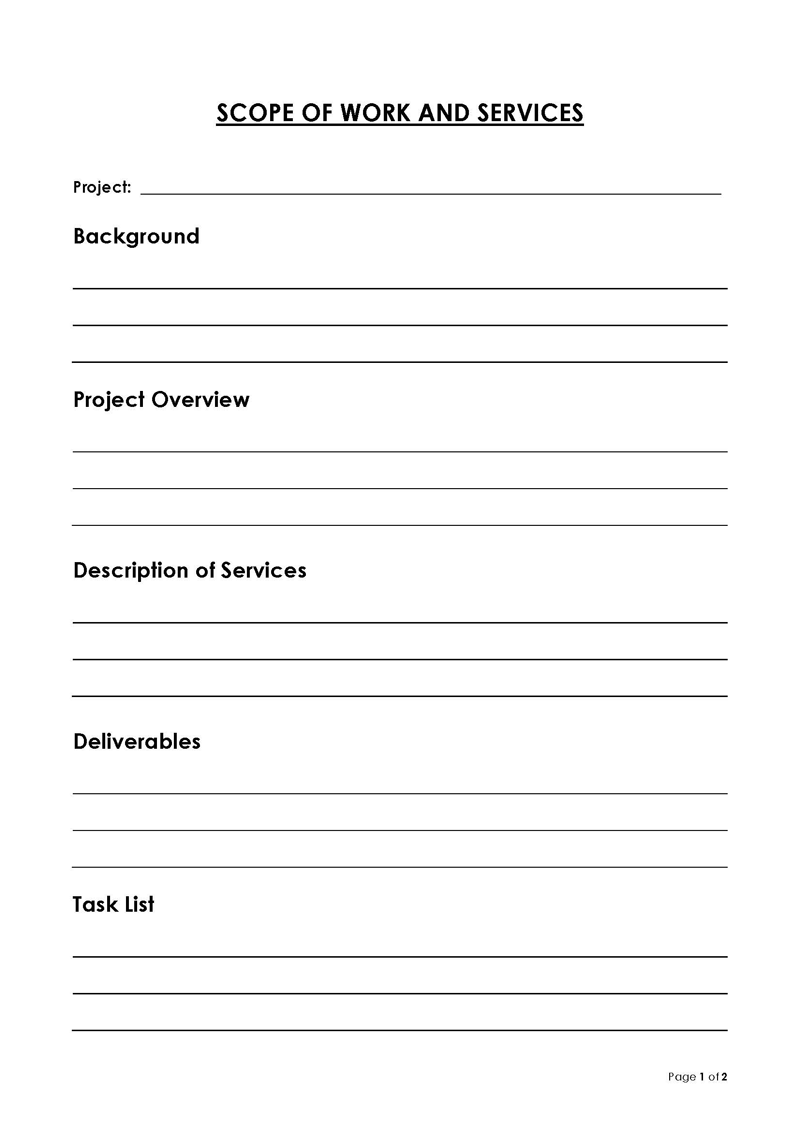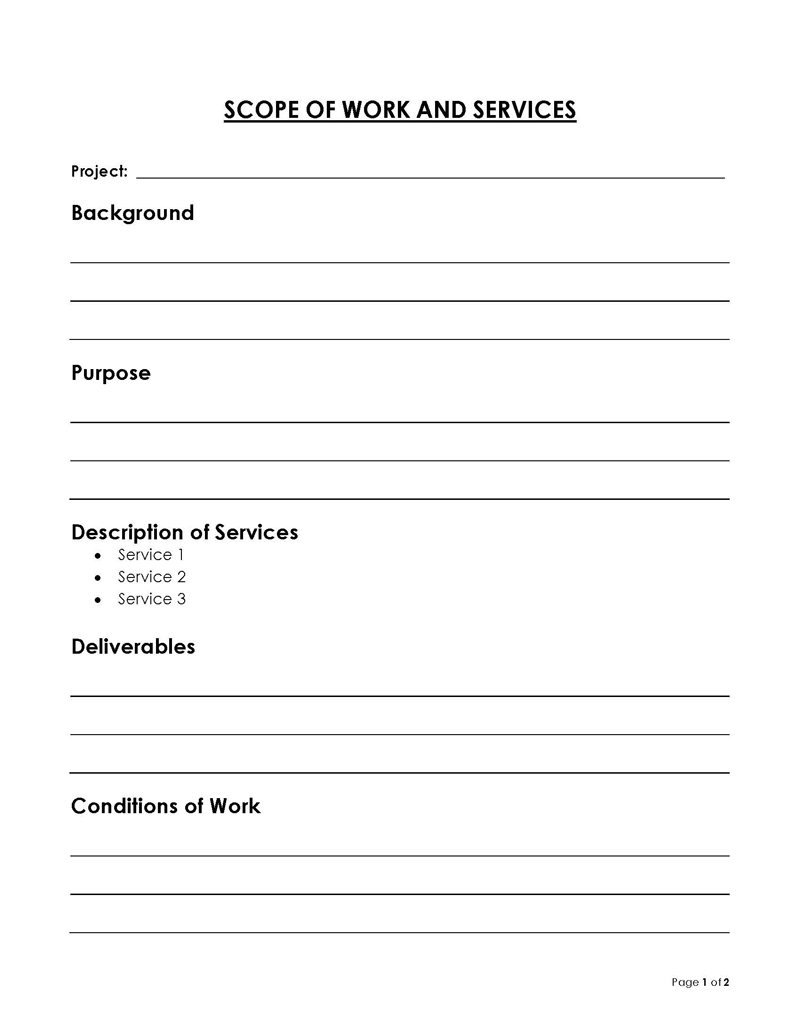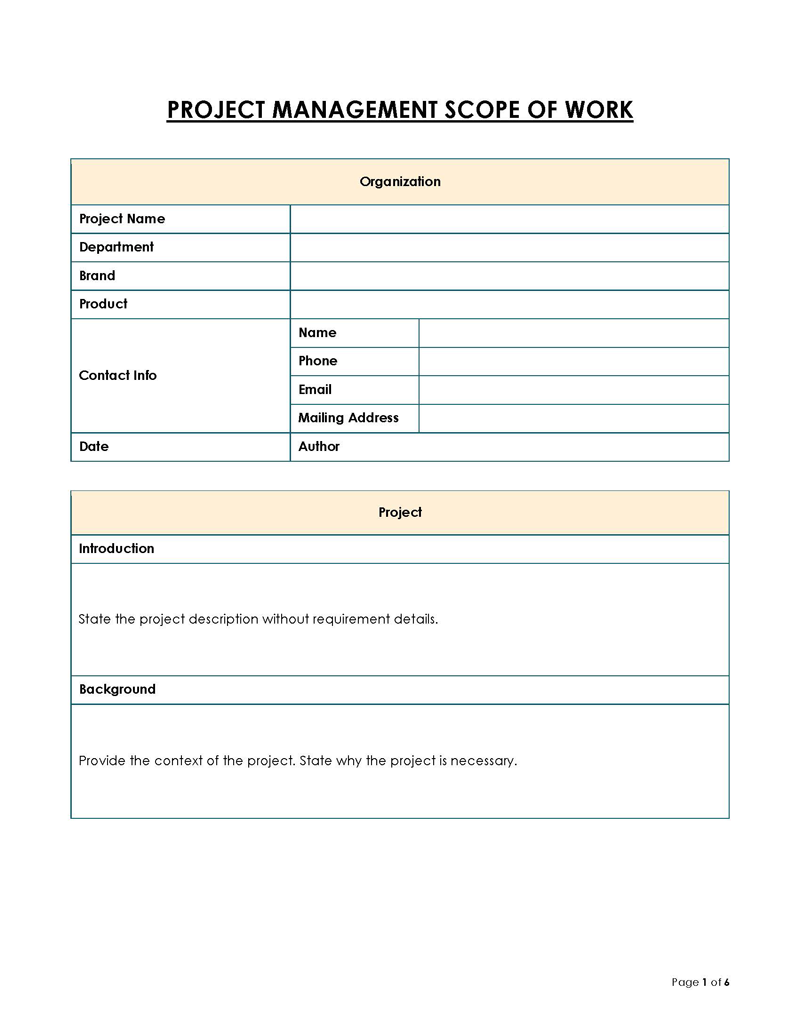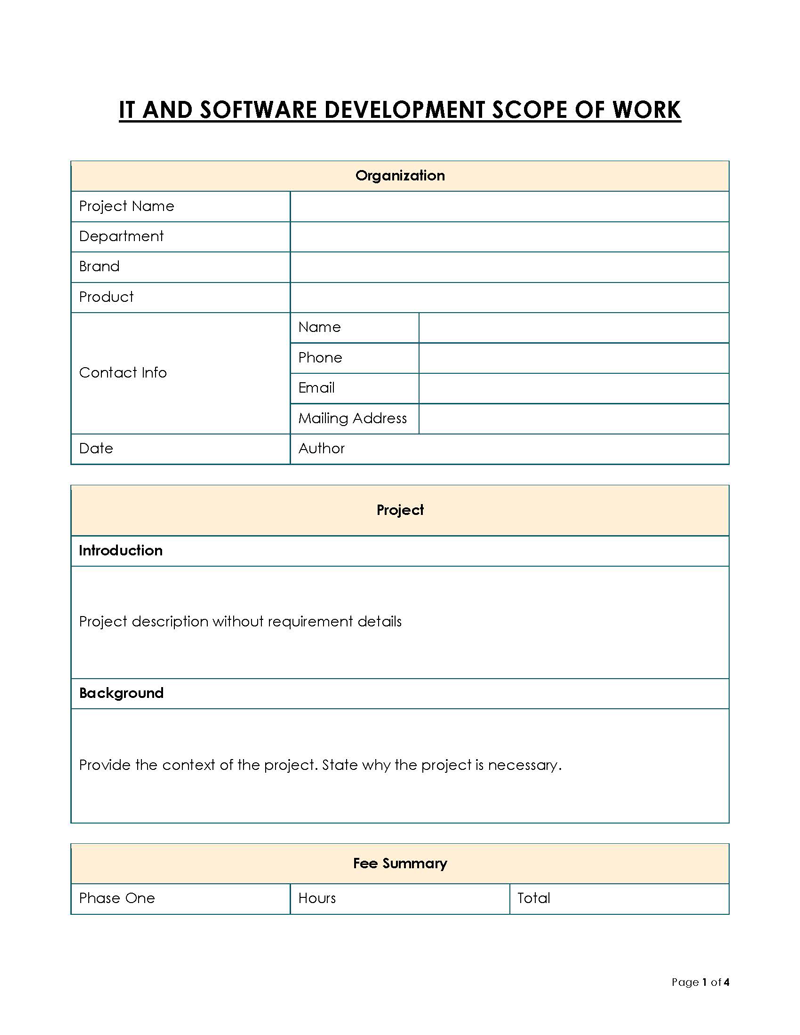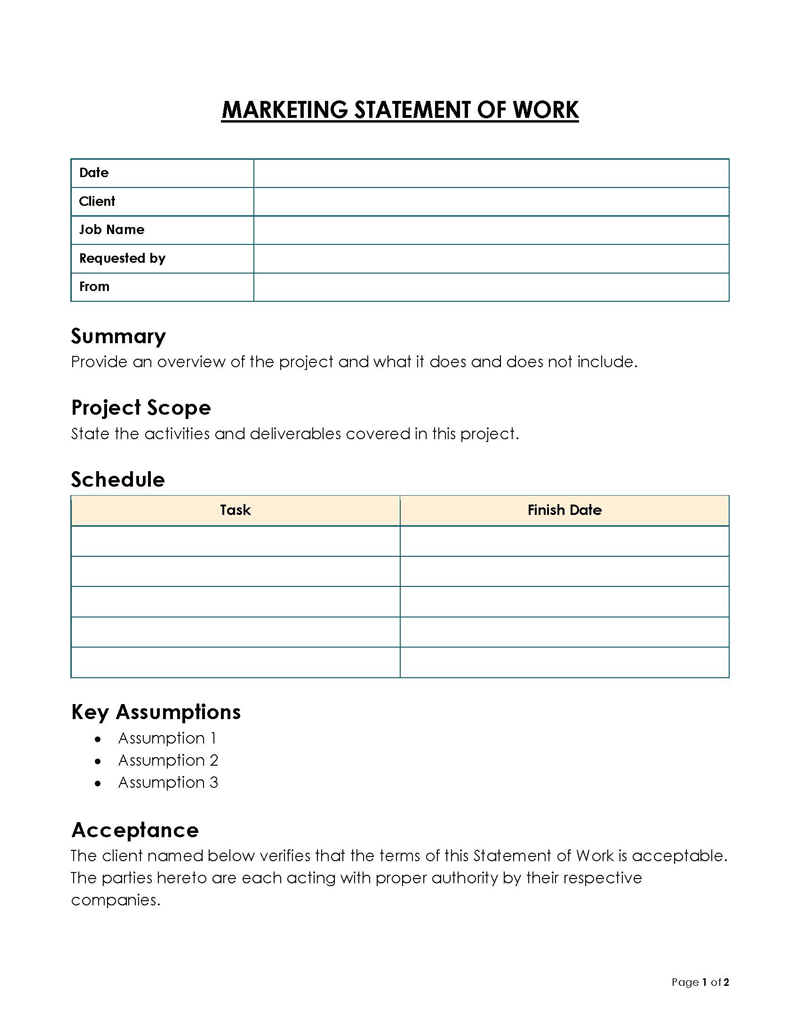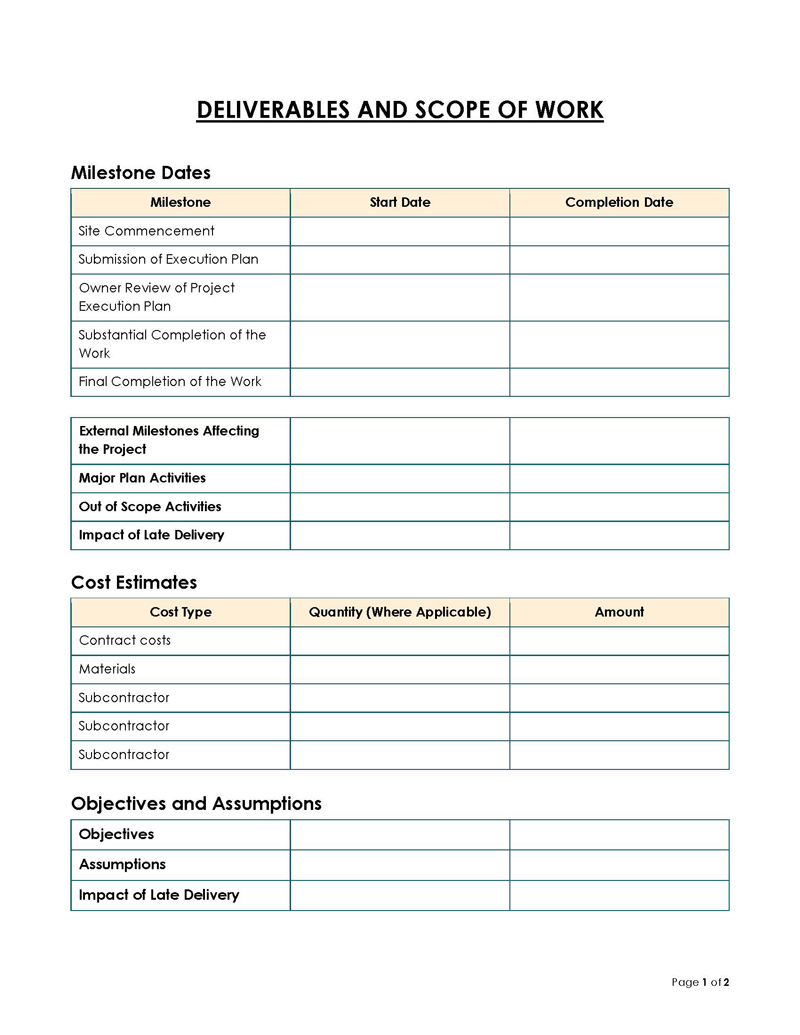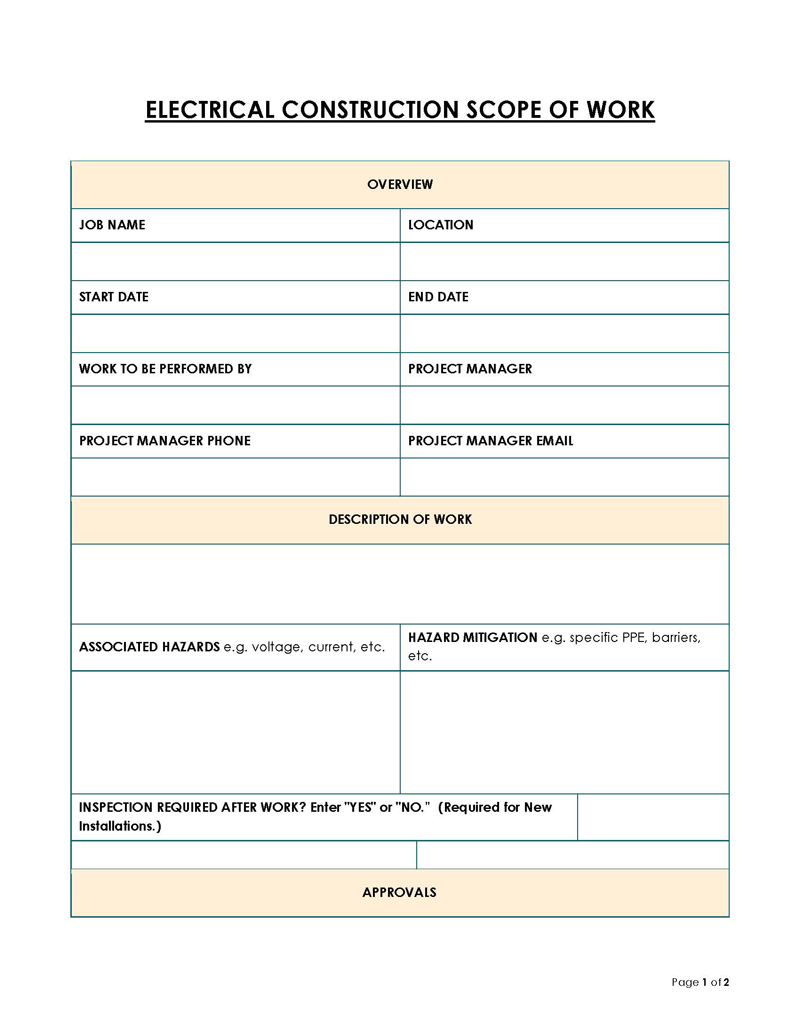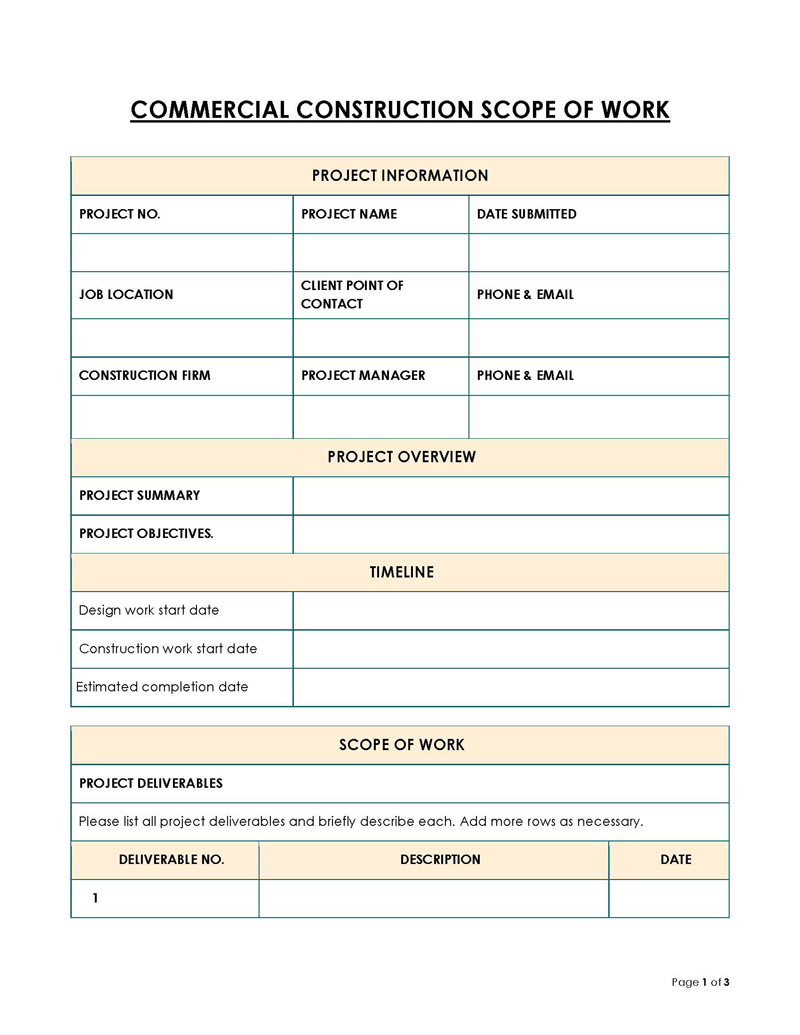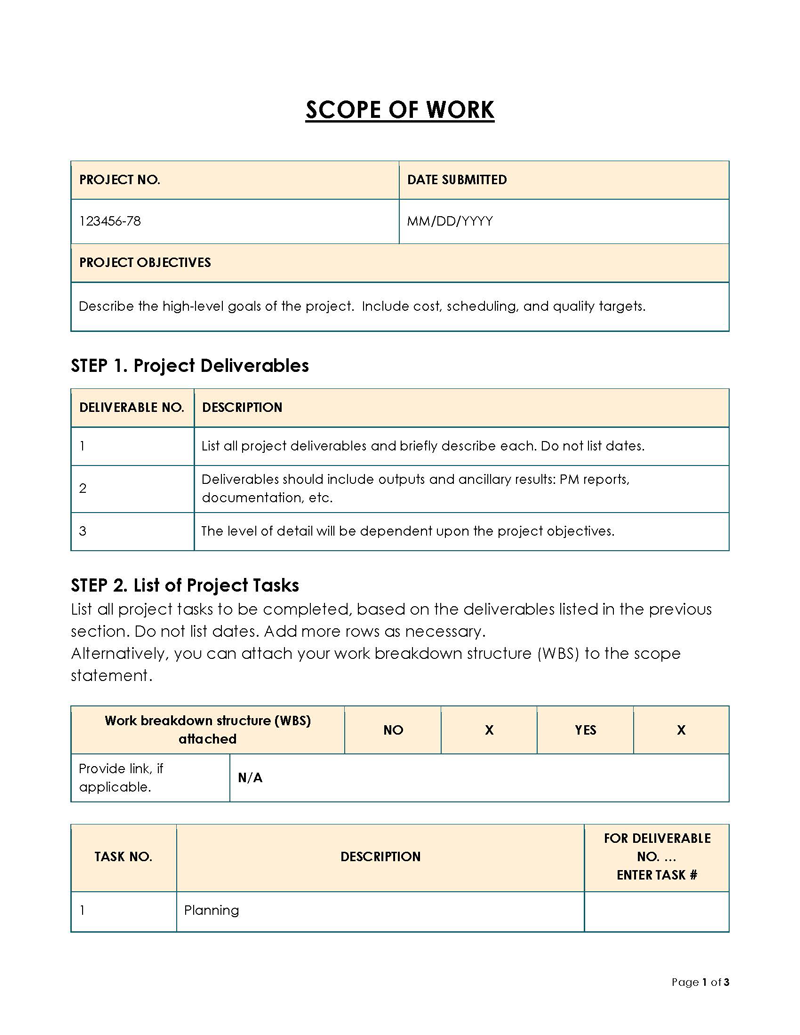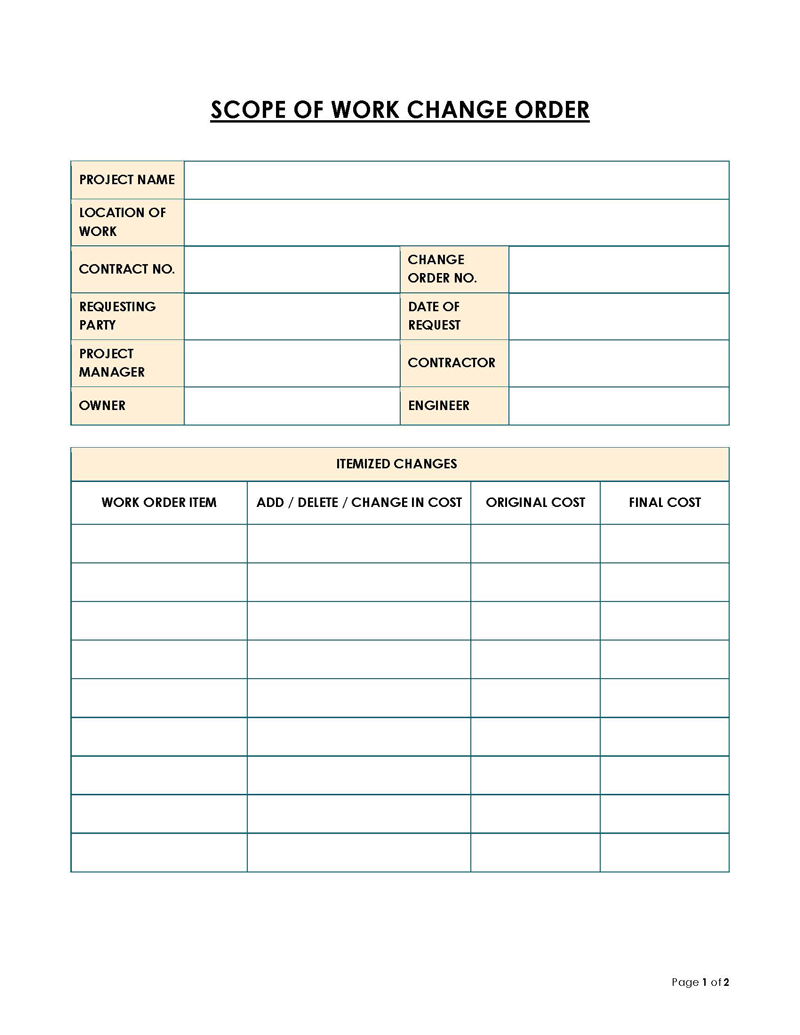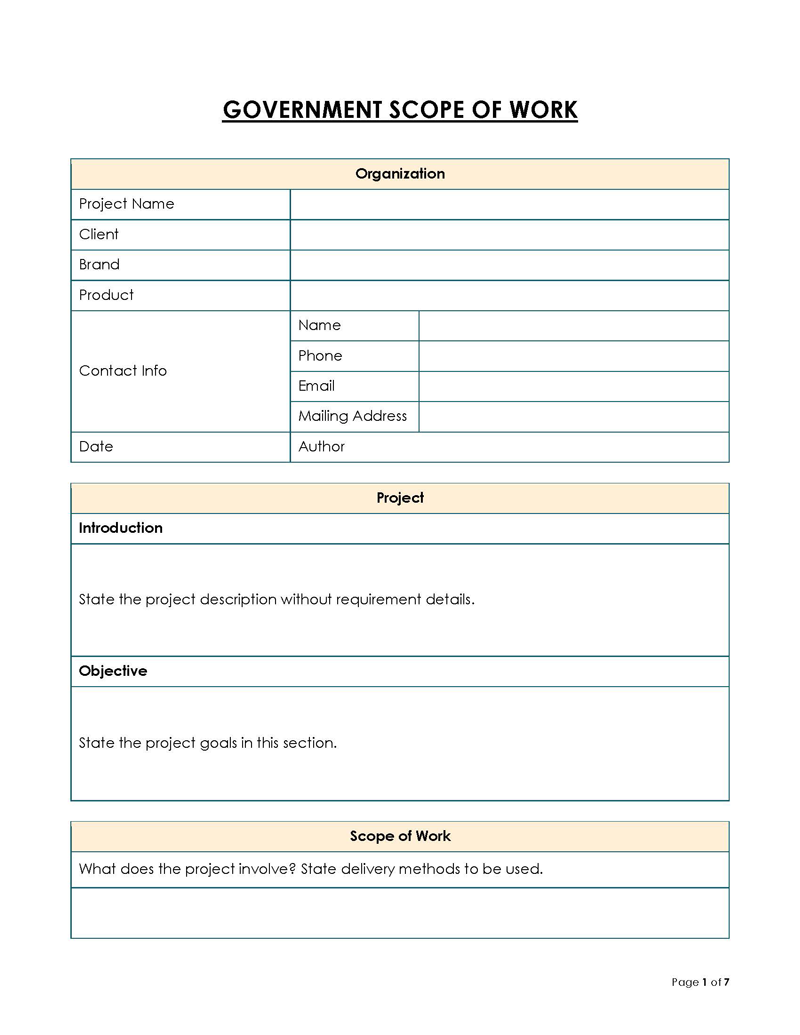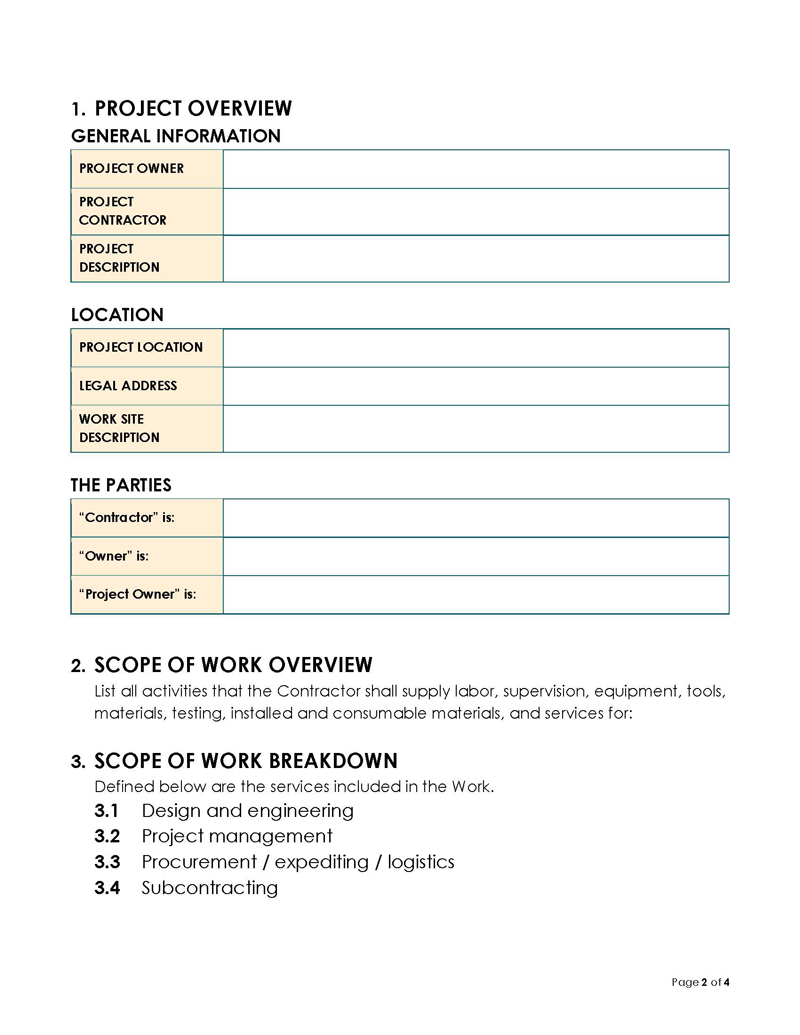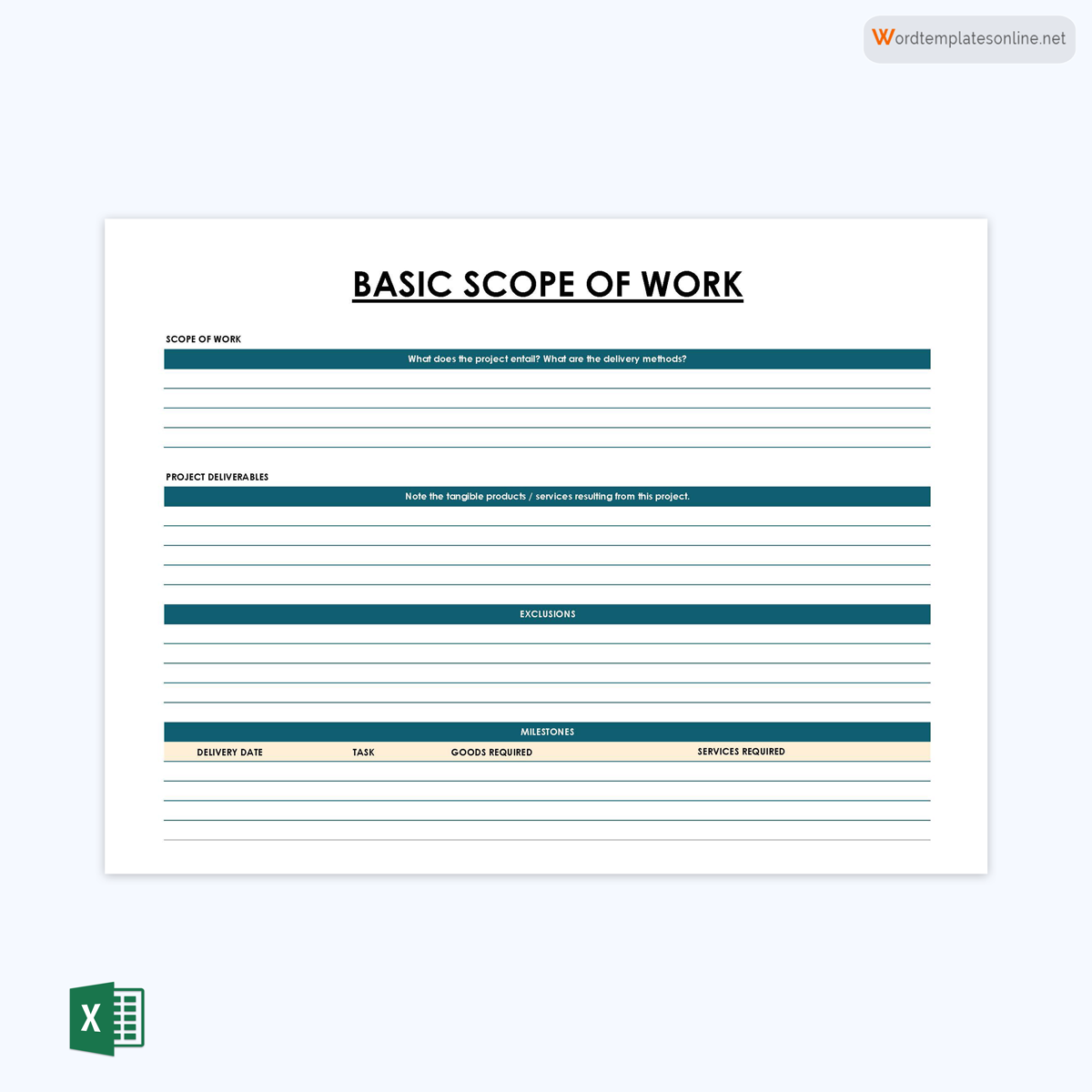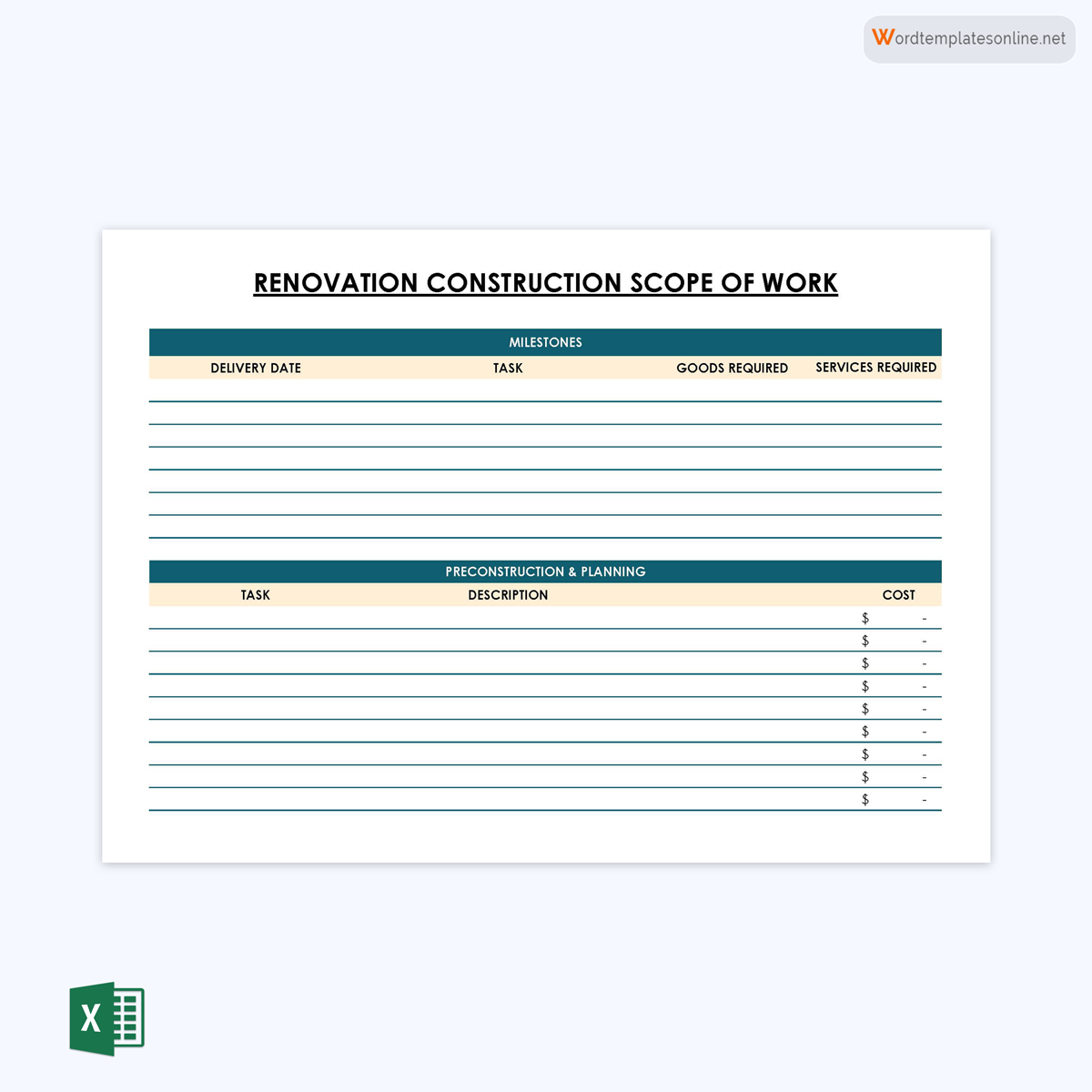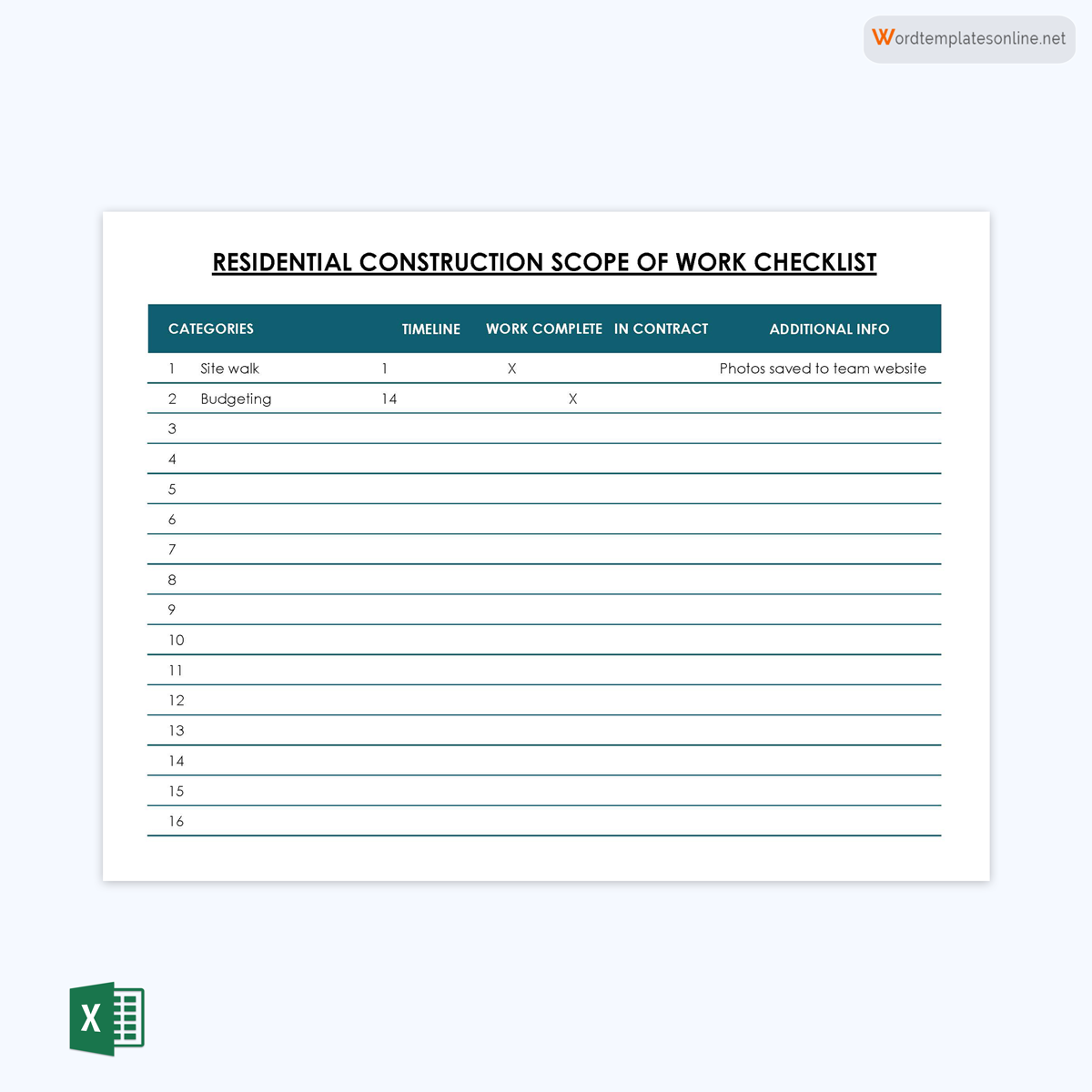A project involves a lot of things, beginning with visualization, laying the groundwork, and assembling a team to complete the project successfully. Setting objectives and assigning tasks to team members is crucial to ensuring the project is done on time and satisfactorily. To ensure tasks are divided accurately among team members, project managers create a scope of work document that describes the project, deliverables, timelines, and compensation for the project. The document is an organizational tool that keeps the team in check throughout the project.
This article discusses the following:
- The importance of a SOW
- How to write it
- Best practices when writing one
- How to share an SOW document
What is a Scope of Work Document?
The scope of work, commonly called an SOW, is a document that defines a project’s essential elements, including the project itself, the timelines, expected deliverables, compensation, and legal requirements.
The document should provide the terms of service, including the phases of the project, the deliverables, and the basis of compensation, i.e., whether it will be hourly or based on work done. The project manager often writes the SOW, or a designated member of the project team, in consultation with stakeholders and subject matter experts.
In some cases, the document may be written by a third-party contractor or consultant who has been hired to manage the project. Regardless of who writes the SOW, all stakeholders must have an opportunity to review and provide feedback on the document before the project begins. This helps to ensure that everyone involved in the project is on the same page and has a clear understanding of the work that needs to be performed to achieve project goals.
Important to know
Scope creep refers to the tendency of a project’s scope, goals, or requirements to expand beyond the initial plan or agreement. It occurs when additional features, functions, or tasks are added to a project without proper planning, analysis, or approval. As a result, scope creep can cause delays, budget overruns, and decreased project quality. It can also lead to misunderstandings and conflicts between stakeholders, as their expectations may not be aligned with the project’s actual scope. Therefore, it is essential to manage scope creep proactively by clearly defining the project’s scope, setting realistic goals, and communicating effectively with all stakeholders.
Templates for the Scope of Work Document
Importance of the SOW document
It is a formal agreement between a client and a service provider or a project manager that helps establish the expectations and boundaries of a project. It is essential for the following reasons:
Defines roles and responsibilities
The scope acts as a record of each team member’s tasks. It provides a place for the team to refer to if they need to refresh their memory. Projects can be overwhelming and may get confusing once everyone starts performing their duties.
Defines project objectives
The SOW document provides clarity on what the project is intended to achieve, the scope of the work involved, and the expected outcomes. This helps the project team focus on the key objectives and ensure that the project stays on track.
Helps avoid scope creep
Scope creep is often gradual and may go unnoticed until it is too late. Therefore, the document should include control mechanisms and change procedures that limit everyone’s duties. The change procedures will ensure the proper channel is followed if it becomes necessary to adjust someone’s tasks beyond their prescribed duties. As a result, changes in it may be noticed and curbed before they affect the performance of other tasks in the project.
Increases communication
Since the scope defines the team’s duties, deliverables, and timelines, it is easy for members to communicate using the guidelines set in the scope. It helps the team stay in harmony and avoid miscommunication, which may affect the progress of the project or the quality of the deliverables.
Helps with staying within budget
Projects are usually grounded on fixed budgets. Therefore, any changes, whether big or small, may affect the cost of everything and, eventually, the overall budget. The document reminds the team members to complete their assigned tasks promptly and without incurring extra costs to maintain the budget.
Sets expectations
The SOW document sets clear expectations regarding the quality of work, timelines, and deadlines for deliverables. This helps to avoid any miscommunication or misunderstandings that can arise during the project.
Mitigates risks
The SOW document identifies potential risks and outlines the measures that will be taken to mitigate them. This helps to ensure that the project stays on track and that any potential risks are addressed promptly.
Essential Components of the Scope of Work
The following components must be included in the SOW:
Project objectives
The project objectives are the goals that should be achieved by the end of the project. It may be a general description of the project or a more specific definition of each goal. The objectives should show the issue to be addressed by the project.
Schedule
The schedule is a timeline of dates for the beginning and end of the project. It should state when the project is expected to start, whether it is one general process, or whether it will be done in phases. In addition, the schedule should provide dates for each milestone where the project will be done in phases.
Individual tasks
Since a team will undertake the project, it is necessary to itemize its tasks and define what each team member must do. The tasks may be indicated in a work breakdown structure, which should include all the tasks in the SOW.
Deliverables
Deliverables are the expected outcome of the development process. They should be stated in the SOW to remind the team what they are working towards. For complex projects, this section may include a technical description.
Financial information
This section outlines the financial aspects of the project, including the budget and payment schedule. The budget section of the SOW document provides a breakdown of the estimated costs for the project, including the costs of labor, materials, and any other expenses. The budget should be comprehensive and include all costs associated with the project, including any contingencies.
The payment schedule section of the SOW document outlines when payments will be made for the project, such as at certain milestones or after the completion of specific deliverables. The payment schedule should be clear and include the amount of each payment and when it is due. In addition to the budget and payment schedule, the financial information section of the SOW document may also include information about any penalties for late payment or other financial terms and conditions.
Expected outcomes
The expected outcome is a result of your tasks. This section should indicate what you expect once you have performed your tasks. It is a qualitative result of the deliverables aligned with the project’s objectives.
Terms, conditions, and requirements
The team’s performance of the service is guided by the terms, conditions, and requirements mentioned in the SOW document. The team should consider these requirements when performing tasks.
Glossary
The glossary lists the abbreviated technical terms used in the document and their full titles. It should define the technical terms to allow a layperson to understand them if they read the document.
Steps for Writing a Scope of Work Document
The steps below may help you write a comprehensive scope:
Describe the project’s scope and goals
This step involves providing a brief overview of the project’s purpose, objectives, and scope. This should be written in simple, clear language that is easy for all stakeholders to understand.
List deliverables
In this step, you will need to define the specific outputs that are expected to be delivered as part of the project. These could include products, reports, documents, or other tangible deliverables.
Create a project schedule
The project schedule is a project timeline and may include specific dates for phases. Where the project will be done in phases, the schedule may include tentative timelines that can be included in the beginning and end dates.
Describe the actual scope of work
This step involves defining the specific tasks required to complete the project, as well as any assumptions and constraints that may impact the project’s scope. This section should be detailed and comprehensive to avoid any misunderstandings.
Include project deliverables
Deliverables are the outcomes of the tasks and timelines. Define the specific outputs that are expected to be delivered as part of the project. These could include products, reports, documents, or other tangible deliverables.
Define the role of the management
Defining project management roles and responsibilities is an essential component of the SOW document. The SOW should clearly outline the roles and responsibilities of all project team members, including the project manager, project sponsor, and any other stakeholders who will be involved in the project. This helps to ensure that everyone understands their role in the project and can work together effectively to achieve the project objectives.
Additionally, defining project management roles and responsibilities can help mitigate risks and avoid potential conflicts that may arise if team members are unclear about their responsibilities.
Payment
The payment section should state how the payments will be made; for example, payments could be made monthly or on the completion of phases of the project. It should also include the consequences of late payment.
Communication information
In this step, you will need to establish a communication plan for the project, including how often and how the project team will communicate with each other and the client. This helps to ensure that everyone is kept up-to-date and can quickly address any issues that arise.
Include legal and regulatory requirements
In this step, you will need to outline any legal or regulatory requirements that must be met as part of the project. This helps to ensure that the project complies with any relevant laws or regulations.
Review and approve
Once the SOW document is complete, it should be reviewed and approved by all stakeholders involved in the project. This helps to ensure that everyone is aligned on project objectives, scope, and expectations and can proceed with confidence.
Best Practices
The SOW document can be standard yet unique to the project. It also needs to be comprehensive to cover all the information about the project.
You can use the tips below to write it effectively:
Keep the document concise
Keep the SOW document concise and to the point, focusing on the most important details and information.
Use clear and concise language
Use clear and concise language when describing the project scope, deliverables, and timeline. Avoid using jargon or technical terms that may be confusing to stakeholders.
Establish realistic timelines
Establish realistic timelines and deadlines for completing the project and its deliverables. Ensure that all stakeholders are aware of the timeline and deadline expectations.
Collaborate
A document that realistically accommodates everyone must be created with the help of others as part of good project management. If you need help in some areas where you might lack experience, you should gather information from experts.
Communicate well
Proper communication helps the project run smoothly by avoiding unnecessary delays. It ensures any technical difficulties are overcome quickly. Open communication with the client, especially at the start of the project, is essential to helping you understand their expectations.
Use visuals
Use visual aids when you can to avoid the monotony of long passages of writing. Charts, graphs, and even slideshows for presentations may help the team better understand the project.
Be clear about the excluded items
When preparing the SOW document, you must state what will be excluded from the tasks and project. Some projects tend to be similar, and the project activities may appear to be the same even if they are activities for separate projects. To avoid confusion, state what needs to be excluded.
Avoid ambiguities
Ambiguous statements in the document make the writer seem disorganized and may demonstrate a lack of understanding of the details of the tasks. This will extend to the project’s overall performance, and team members may have different expectations due to miscommunication.
Involve stakeholders
Involving stakeholders is useful for the project because it creates a rapport between the team and the clients. In addition, it creates a sense of belonging among stakeholders and helps foster a supportive environment of mutual expectations.
Review the document
Reviewing may help you identify mistakes that you would not have seen before. Simple grammatical errors may lead to an unprofessional appearance of the document, and proofreading may help you avoid this. Where possible, you may ask someone else to help you proofread the work and suggest whatever improvements they think should be made.
Sharing Channels for the SOW document
The choice of sharing channel will depend on the specific needs and preferences of the project team and stakeholders. It’s important to select a channel that is convenient, secure and allows for efficient collaboration and communication among all stakeholders.
Several channels can be used to share a SOW document:
The SOW document can be shared as an attachment via email. This is a common and convenient way to share the document with stakeholders.
Project management platform
If the project is being managed using a project management tool such as Asana, Trello, or Microsoft Project, the SOW document can be uploaded to the platform and shared with the project team and other stakeholders.
Document sharing platform
Online document-sharing platforms such as Google Drive, Dropbox, and OneDrive can be used to store and share the SOW document. This allows stakeholders to access the document from anywhere and collaborate on it in real time.
In-person meetings
A physical copy of the SOW document can be distributed during in-person meetings or workshops. This can be especially useful for discussing the document and gathering feedback from stakeholders.
Video conferencing
The SOW document can be shared during virtual meetings using video conferencing tools such as Zoom, Skype, or Microsoft Teams. This allows stakeholders to review the document together and discuss any questions or concerns.
Key Points
- The scope of work outlines the framework of a project and explains how it will be performed.
- An adequate SOW document must outline what a project entails, its objectives, and its activities.
- The contents should be presented clearly and concisely for easy understanding by the team members and the client.
- You should review the document once it is complete and have another person review it as well to avoid grammatical and technical errors.
- Include procedures to regulate scope changes to prevent unapproved and uncontrolled changes that could expose you to legal liability.
